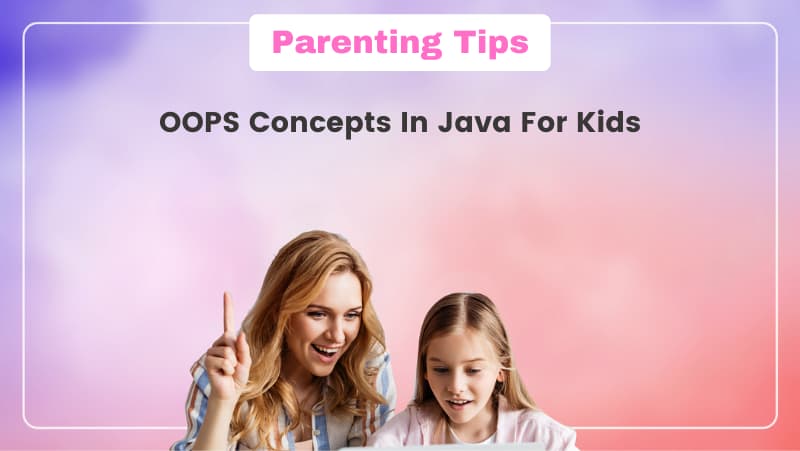What is OOPS
As the title suggests, Object Oriented Programming System (OOPs) is a programming concept that runs on the concept of “objects.” These objects contain data and methods of using them.
Throughout the program, the objects can be manipulated to get the desired result. This data can be reused. It is widely used in modern programming languages like Java. The variables are known as attributes and the behavior is known as a function but here it is known as methods.
Before diving into the blog, You can check out the video.
Some of the important concepts that are required to know in OOPs are as follows:
What is Class in OOPS
A class can be described as a blueprint with a group of similar entities, through which various objects can be created. In simpler words, it is a group of variables and functions. It is a logical component or entity and not a physical entity.
It is easier to understand this with the help of an example. Suppose “expensive cars” is a class and for this class, the objects will be Mercedes, BMW, Toyota, and so on. Its properties/data/variable/attribute can be price, speed of the cars and the methods/functions can be like driving, reverse, braking, and so on of the car.
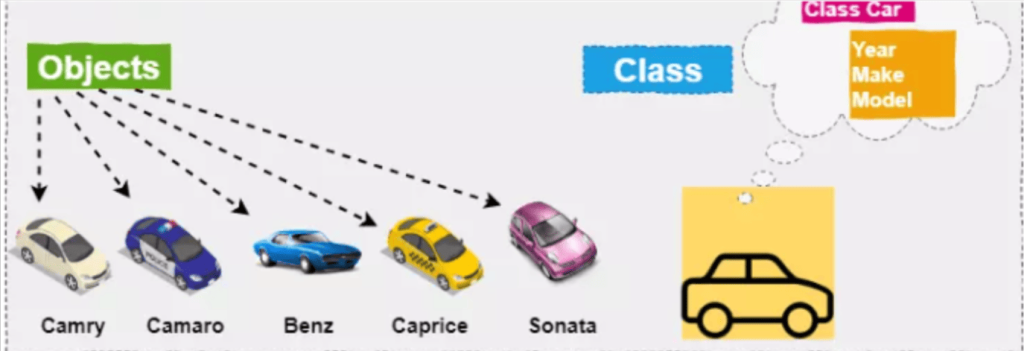
Syntax
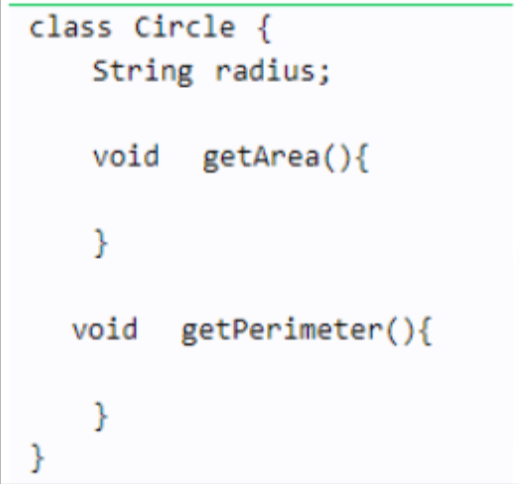
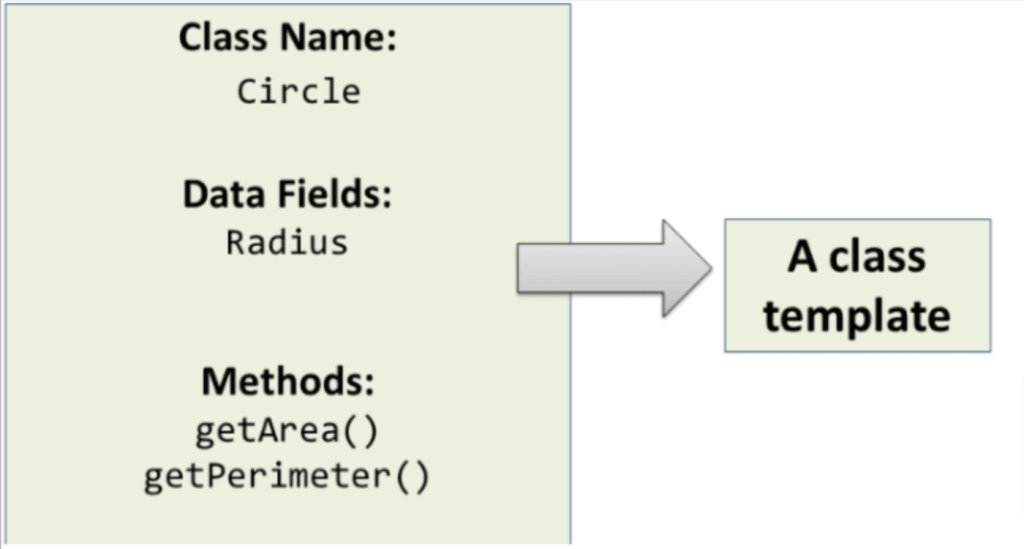
What is Object in OOPS
Real-world substances like laptops, mobiles, cars, tables, chairs, etc. are objects. It is defined as an instance of a class. In a program, multiple instances of a class are present. It is a bundle of data and its behavior is known as methods. Objects have two characteristics, states, and behaviors.

For Examples
Object: House
AttributeState: Address, Color, Area
MethodBehavior: Open door, close door If we want to write a class based on states and behaviors of the House we have to.
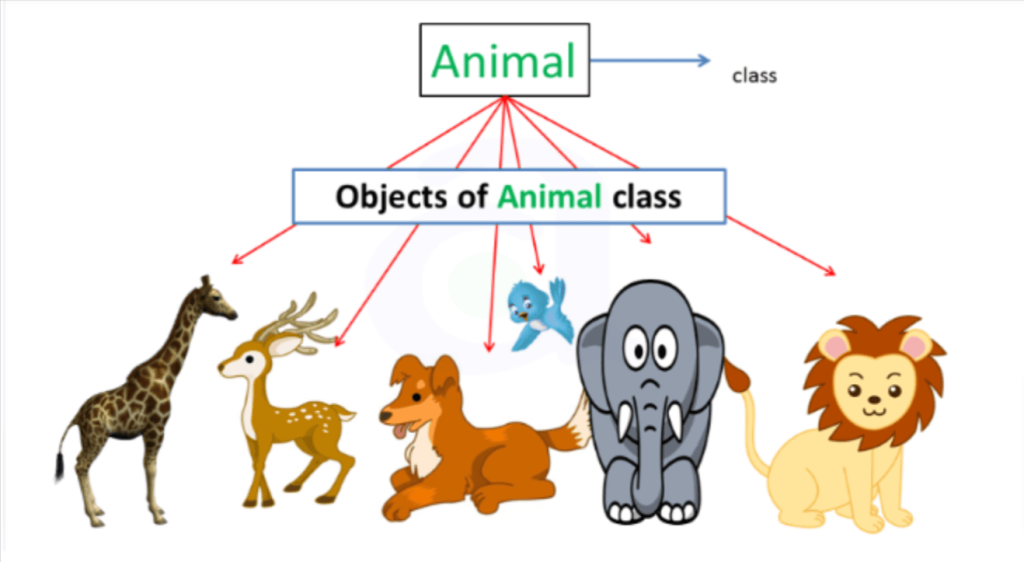
Syntax

For Example:
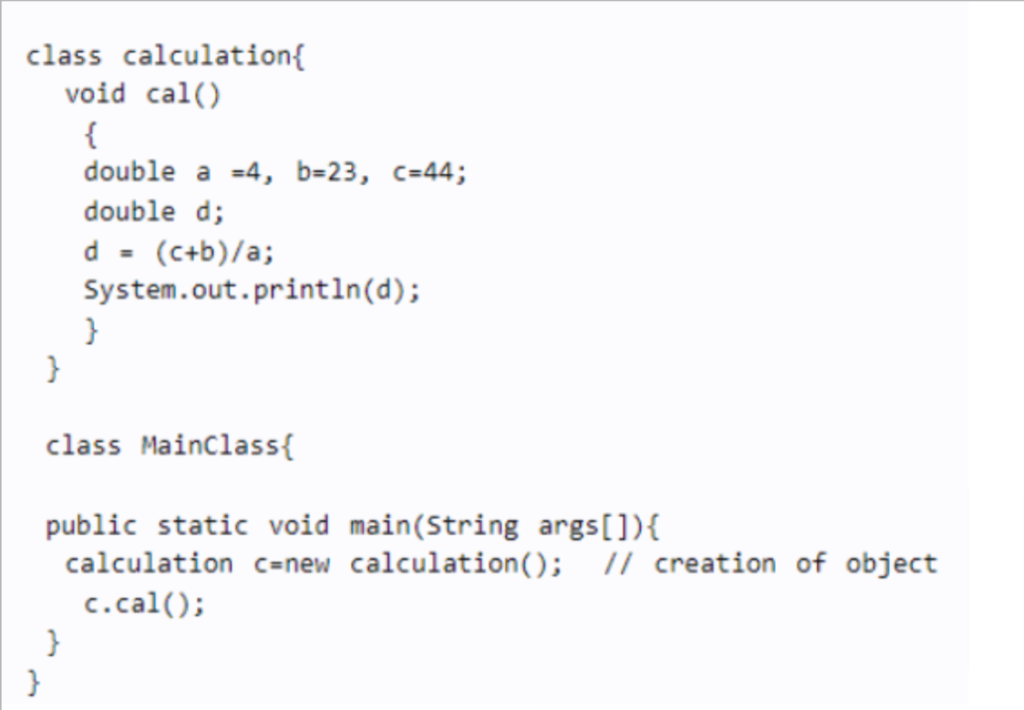
Output:
16.75
Features Of OOPS
There are 4 main features of OOPs. There are as follows
- Encapsulation
- Inheritance
- Abstraction
- Polymorphism
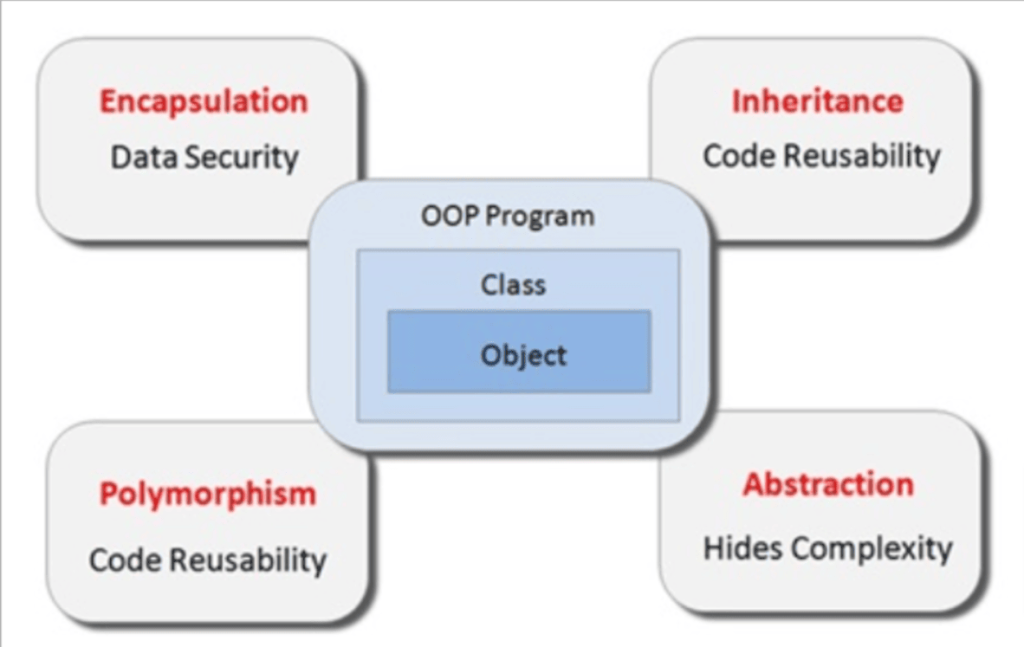
- Inheritance
Another important and interesting concept of OOPs is inheritance. As the name suggests, in this concept one object acquires the properties and behaviors of the other parent class. In simpler words, this concept develops the parent-child relationship between two classes.
The parent class is called the base class or superclass and the child class that extends the base class is called the derived class or subclass or child class. The code here is reusable.
Types of Inheritance are:
- Single inheritance
- Multiple inheritances
- Multi-level inheritance
- Hierarchical inheritance
- Hybrid inheritance
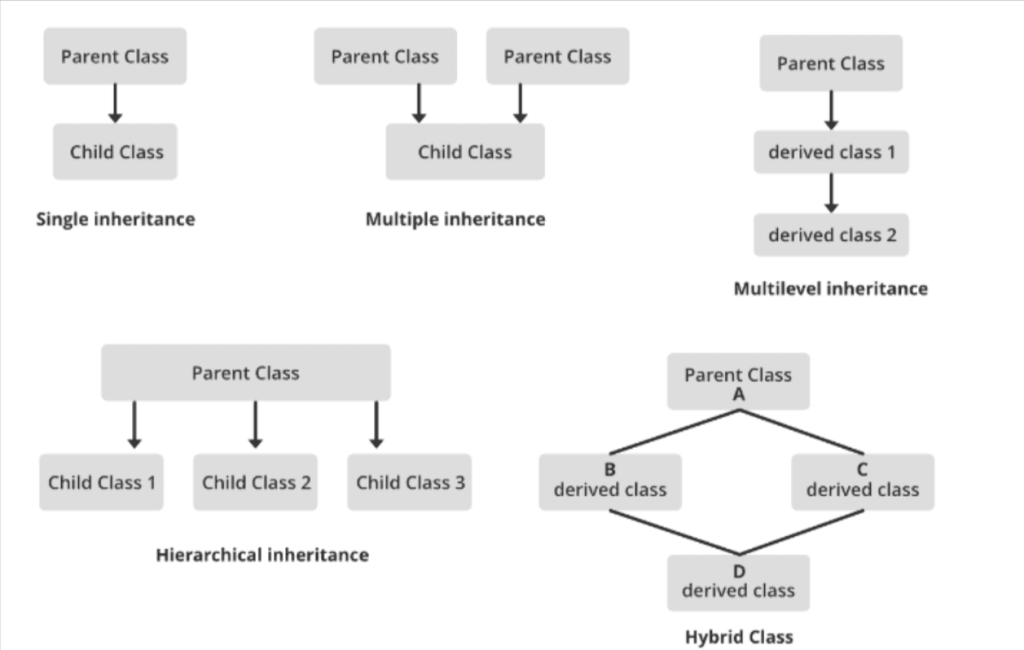
- Single Inheritance: it has only one child and a parent. The child class is inherited by the parent class.
- Multiple Inheritance: it has more than one parent class and it will be derived from the single base or child class.
- Multilevel inheritance: the first child is derived from the parent class and then the second time the child will become parents and that will be derived from another child class.
- Hierarchical inheritance: more than one-child class is derived from a single-parent class.
- Hybrid inheritance: it is a combination of multiple inheritances and multilevel inheritance.
- Polymorphism
Polymorphism is an important concept of OOPs. This term can be understood by breaking the word into two parts, poly means many and morphs means shapes. This ultimately means that one task has many ways through which it can be executed.
For example, a man behaves differently in different situations as shown below image.
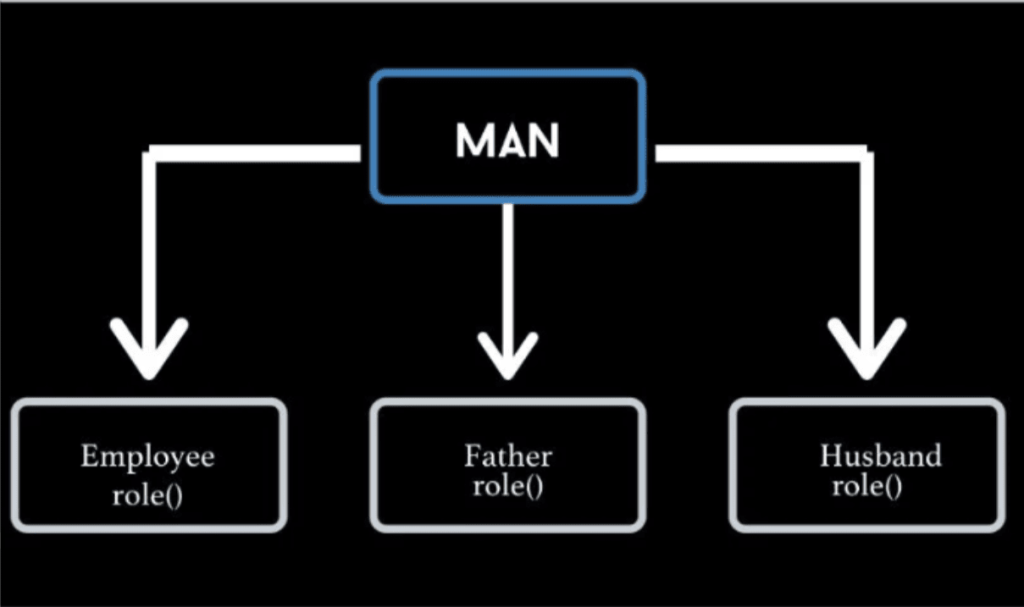
Some of the types of polymorphism are shown in the below picture.
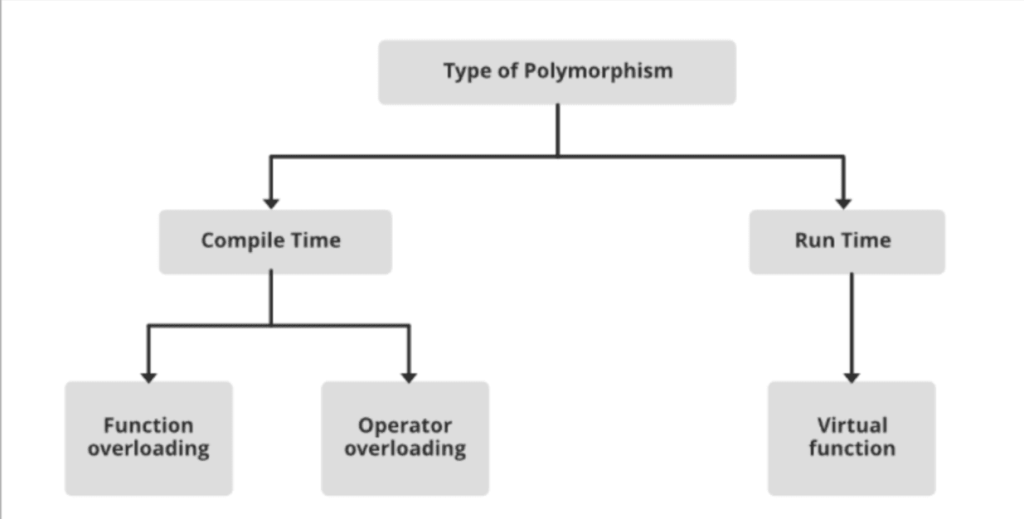
- Abstraction
Another main concept of OOPs is abstraction. It is used to hide the complexity of the internal working and only displays the simplicity or the essential working.
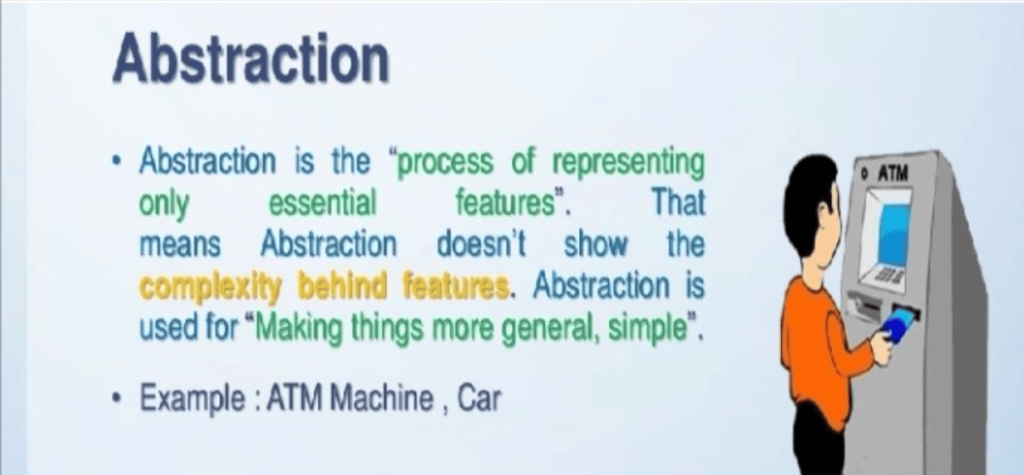
- Encapsulation
The major and one of the best concepts in OOPs is encapsulation. Wrapping the data and the code together is encapsulation. As this prevents accidental changes through the objects, access to a class’s variables and functions/methods is restricted. The only way to access it is by using the methods of their current class. For example, the chocolate is wrapped in the cover.
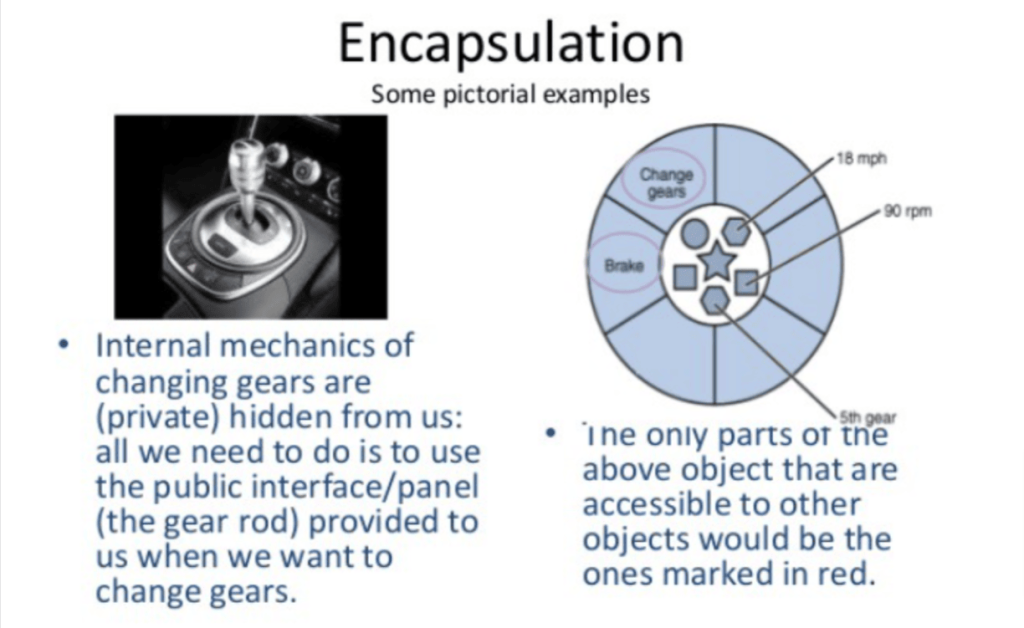
Advantages Of OOPS
- Clear modular structure for programs, makes it easy to understand.
- It can be reused.
- It is time efficient and also has a significant development cost.
- It has a better design with minimum flaws.
- Since every object exists independently, the programs’ modularity is enhanced. Exploring kids computer programming can help them understand how modularity in programming enhances the organization and functionality of their projects.
Conclusion
OOPs (Object-Oriented Programming System) is a programming concept that runs on objects. Some important concepts of OOPS are mentioned above. These concepts are easy to understand and do not require a technical process to execute.
To learn more fun concepts, do check out the fantastic and informative blogs on the BrightCHAMPS blog page.
Checkout programming classes for kids to learn more about Java programming.
Frequently Asked Questions (FAQs)
Most of the language does not support Multiple inheritances.
OOPs, are used to control and access the data in a program easily.
It makes it easier to solve problems by breaking the program into bit-sized problems.

